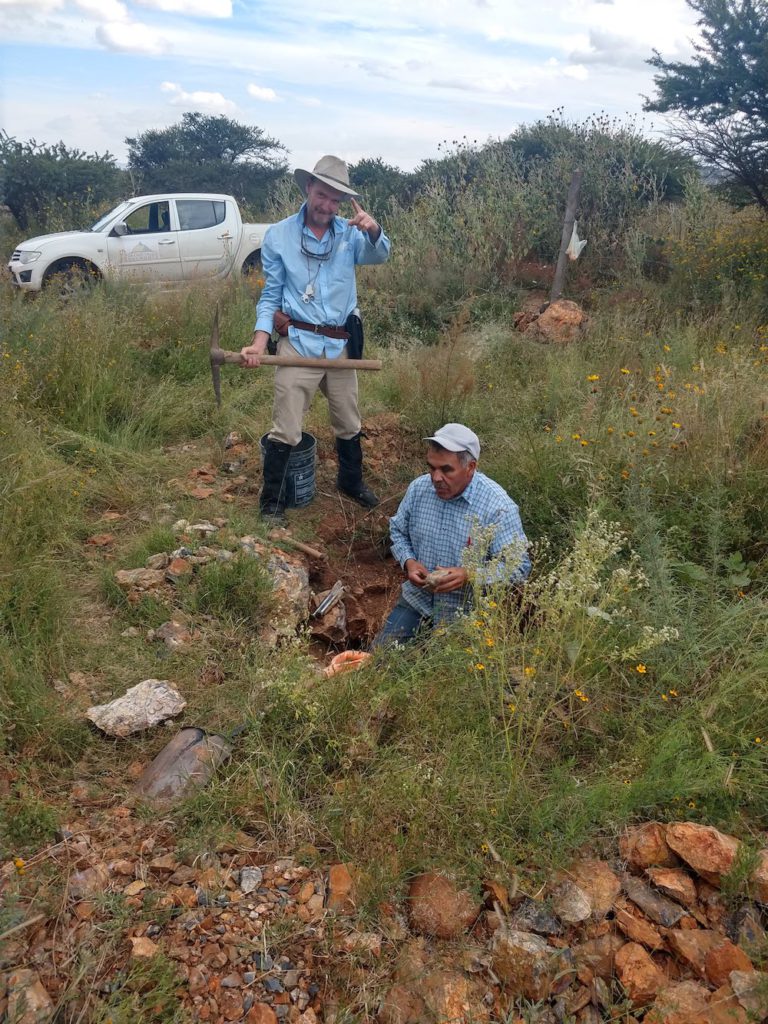JV Article: Radius Gold options Tropico near Juanicipio/Fresnillo mines in Mexico


It took two years and six trips to Mexico, but earlier this month Radius Gold (TSXV: RDU) emerged triumphant with an option agreement to earn 100% of the Tropico target in the heart of the Fresnillo silver district in Mexico’s Zacatecas state.
The ‘hot-spring type’ sinter-rimmed gold-bearing breccia pipe at Tropico is located within sight and in the same rocks as the Fresnillo mining district, and is about 35 km from the Juanicipio mine, a joint venture between MAG Silver (TSX: MAG; NYSE-AM: MAG) and Fresnillo (LSE: FRES) that is ramping up to nameplate capacity this year.
The Fresnillo mining district has estimated production of more than 3.0 billion oz. silver since 1553. In 2021, Fresnillo’s Fresnillo mine, about 25 km from Tropico, churned out nearly 12 million oz. silver. Juanicipio, a high-grade silver-gold-lead-zinc-epithermal vein deposit, 56% owned by Fresnillo, the operator, and 44% by MAG Silver, contains an estimated 6.9 million oz. silver at a head grade of 556 grams silver per tonne.
“As the old saying goes: ‘If you want to find a mine, explore within the shadow of a headframe and there are a lot of headframes down the road from Tropico,” says Bruce Smith, Radius Gold’s president and CEO. “We’ve found something that we like a lot and one that is going to hopefully get us some bang for the buck in the short term.”
Smith, a geologist from New Zealand who led the team that found the Chinchillas deposit in Argentina now owned by SSR Mining (TSX: SSRM; NASDAQ: SSRM; ASX: SSRM) and has participated in gold discoveries in Guinea, Guatemala, Nicaragua, and Mexico, has a special interest in ‘hot-spring type’ sinter and breccia pipe targets like Tropico.
Twenty years ago, he covered the entire Central Mexican belt looking for hot-spring targets but didn’t notice Tropico at the time because the hot-spring down the road from it was inactive.
But two years ago, Smith was driving down national highway route 45, about 30 km northwest of Fresnillo city, and stopped to look at a target of interest (he typically has hundreds of GPS points of interest on his phone at any one time) and found the Tropico sinter instead.
“It doesn’t outcrop very well and it’s in a flat bean field,” he says. “It’s 450 metres long and 250 metres wide, which is a significant pipe, and that’s just what we can see. The rest is bean field, so we don’t know how big it is, but it has gold in it and mercury, and it’s actually high-grade for a sinter. Most of the sinter systems at surface do not carry gold, they are typically barren.”

Sinter is a formation of opaline silica deposited in a hot-spring environment at surface and can be the surface indication of a mineralized system at depth. Examples of epithermal gold and silver mines located beneath sinter deposits include Juanicipio, and parts of Fresnillo, Lihir in Papua New Guinea and Waihi in New Zealand.
“I’m from New Zealand and the hot-spring epithermal district where they really understood these deposits is in my backyard,” Smith says. “The Waihi gold mine, which had a big sinter on top of it, is close to where I live, and I’ve spent quite a number of years looking at all the epithermal hot-spring systems in New Zealand, so I really understand what they look like.”
Another advantage Radius Gold had in identifying Tropico, Smith says, is that the company was founded by Simon Ridgway, who has been focused on hot spring epithermal systems for over 20 years. Ridgway, Radius Gold’s chairman, found two such deposits — San Martin in Honduras and Cerro Blanco in Guatemala — before selling them to Glamis Gold, which later became Goldcorp. Those were both hot-spring discoveries and among the biggest successes of his career.
At Tropico, Radius collected and assayed 28 rock chip samples and gold values ranged from 0.02 parts per million to 0.88 ppm, with an average of 0.28 ppm, which is considered significant for a sinter system. In actual sinter material at Tropico the highest grade was 0.39 ppm. Mercury values were also high, with several samples exceeding 100 ppm.
Under the option agreement, Radius paid an initial US $200,000. Another US $200,000 in staged payments is due over the next 42 months. At month 48, the company can acquire 100% of the 2.0 k2 property for a payment of US $5.0 million. An additional milestone payment of US $5.0 million is conditional on delivering a feasibility study or at the start of mine construction. If reserves exceed 2 million gold-equivalent ounces, a further US $3.0 million will be due.
The next steps at Tropico are to complete geophysical surveys and Smith expects to start drilling within three to six months.
“The Fresnillo systems tend to start between 150 to 300 metres below ground and can go down a kilometre, so we will do some deep-looking resistivity surveys to define the shape of the pipe and define the bits we cannot see that are hidden below cover and then we’ll start to drill.”
Elsewhere in Mexico, Radius Gold has option agreements funded by partners in Chihuahua state with Pan American Silver (TSX: PAAS; NASDAQ: PAAS) at its Amalia project and with Fresnillo Plc at its Plata Verde project JV projects in Guatemala with Volcanic Gold Mines Inc (TSX: VG).
The preceding Joint Venture Article is PROMOTED CONTENT sponsored by Radius Gold and produced in co-operation with The Northern Miner. Visit: www.radiusgold.com for more information.
Comments